juliannafunk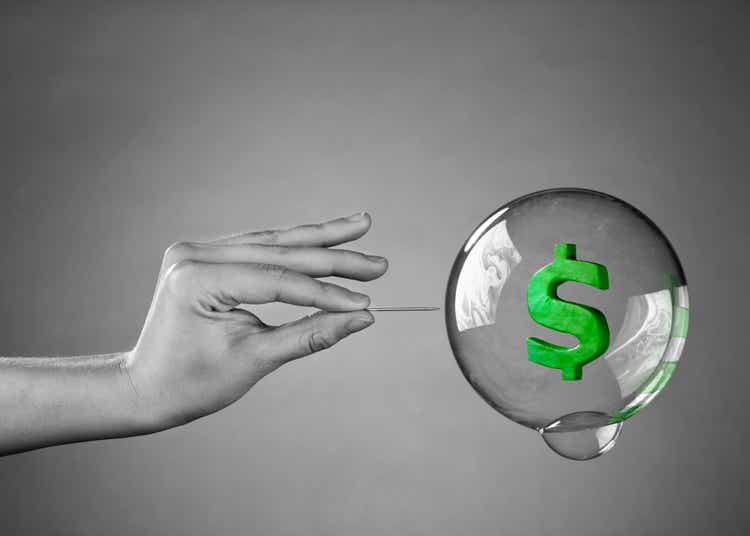
The S&P 500 Index (SPY) is down 25% year-to-date. 2022 is on track to becoming one of the worst years in stock market history.
What is causing this painful stock market crash? It is not inflation, nor the Fed and nor the war in Ukraine.
It is the massive bubble of 2021.
On December, 4, 2021, I warned you about this bubble in the article, “The Epic 2021 Bubble Already Collapsed, We Just Entered Phase 2“.
I discussed that every massive bubble, including the one in 2000, collapses in three phases:
- Phase 1 – Hyped small caps collapse
- Phase 2 – Overvalued mid caps collapse
- Phase 3 – Overvalued large caps and indices collapse.
That is exactly what has unfolded over the past one and a half years.
- February 2021: Unprofitable small cap growth stocks, such as Cathie Woods’ ARK Invest fund (ARKK) topped out and declined by 40% before the market topped in December 2021.
- October 2021: Bubilicious mid cap growth stocks, such as Cloudflare (NET) and DoorDash (DASH) topped out and declined by 40% as well before the market topped.
- December 2021: Big tech stocks which were deemed indestructible eventually topped out and brought down the entire market with them.
Today, in this article, I want to provide you more insights regarding the unfolding of the last phase of this bubble, which is currently happening.
- I will discuss where you absolutely do NOT want to be invested for the coming months.
- Good news – I will also discuss which stocks I believe will generate tremendous returns going forward. Because, yes, for the first time in many years, I believe a lot of money can be made on the LONG side as well.
Read this article thoroughly, because the knowledge provided will be highly valuable for you to better understand this vicious bear market.
Be prepared for these stocks to crash
The S&P 500 is down 25%, the Nasdaq (QQQ) is down 35% and many individual tech stocks are down over 80%.
Where should you hide during this bloodbath?
Maybe defensive stocks in the consumer staples (XLP) and health care (XLV) sectors can give more stability to your portfolio, as they are holding up very well? At least, that is what I am hearing constantly in the financial media.
A disaster.
Why?
Let me tell you a secret. There is no such thing as a “safe haven” during a bear market. Everything eventually gets killed. Defensive stocks are just the last domino block to fall.
Just have a look what happened with these so-called safe havens during the 2000 bear market.
Amgen (AMGN), AT&T (T) and PepsiCo (PEP) appeared to be fantastic stocks for investors who wanted more stability in their portfolio during the dot com bubble.
During the first year and a half of the bubble collapse, these stocks generated positive returns while the S&P 500 plunged by almost 40%.
One year later, these stocks crashed by 23-47% and massively underperformed the second part of the dot com bear market.
This does not seem so safe to me.
History never repeats, but it oftentimes rhymes.
“Safe haven” stocks today
Right now, we are at a very similar inflection point of the bubble collapse as September 2001. I believe investors will generate extremely disappointing returns if they invest in so-called “safe havens” these days.
Due to their relative outperformance this year, these stocks are currently trading at higher valuations than the S&P 500 despite their significantly lower growth rates.
Also, their dividend yield is much lower than what you can currently earn on zero-risk US government bonds (4%). This makes no sense at all.
The bubble is still present in defensive stocks and once it pops, I believe they also have 30% or more downside from current levels.
In contrast to what traditional media is telling you right now, defensive stocks are not the place to hide during the second part of this bear market. Watch out.
| S&P 500 Index (SPY) | -25% | 18x | 1.82% | 12.0% |
| Stock name | YTD return | P/E ratio | Dividend yield | 5-year annual EPS growth |
| Campbell Soup (CPB) | +16% | 20x | 2.94% | -2.8% |
| General Mills (GIS) | +15% | 16x | 2.70% | 3.4% |
| Amgen (AMGN) | +11% | 21x | 3.02% | 4.0% |
| PepsiCo (PEP) | -2% | 24x | 2.61% | 2.5% |
| Johnson & Johnson (JNJ) | -4% | 24x | 2.66% | 8.8% |
| Coca-Cola (KO) | -7% | 25x | 3.16% | 3.9% |
| Hormel Foods (HRL) | -8% | 25x | 2.32% | -0.1% |
| Walmart (WMT) | -10% | 26x | 1.71% | 6.2% |
| Mondelez (MDLZ) | -14% | 21x | 2.52% | 8.6% |
| Procter & Gamble (PG) | -24% | 21x | 2.85% | 7.9% |
(Source: author; data from YCharts)
Be prepared for these stocks to rally
I am seeing tremendous buying opportunities in the small-to-mid cap growth space. Before calling me crazy, let me explain to you why I believe so.
Extreme fear has kicked into the market over the past months. As such, higher-risk assets have been sold off purely based on emotions, not for fundamental reasons.
Due to this fast and extreme sell-off, these stocks have become very attractively valued. As the market will gradually recognize this, small-to-mid cap growth stocks have the potential to bottom out way earlier than the market, just like they topped out way earlier.
This, as well, is a phenomenon which occurs during each bubble collapse.
During the first part of the dotcom bubble, for example, mid cap growth stocks like Amazon (AMZN), eBay (EBAY) and Intuit (INTU) plunged by as much as 94% in a very short time.
However, the stocks bottomed out in 2001 as the extreme sell-off was unjustified. By the time the S&P 500 bottomed out in March 2003, these risky growth stocks were already trading as much as 300% higher.
2001 was a once-in-a-lifetime buying opportunity in the small-to-mid cap growth space. A $10,000 investment in Amazon, Intuit and eBay at the depth of the crisis turned into $4,000,000, $387,000 and $123,000 today (that includes the recent downturn).
History never repeats itself, but it oftentimes rhymes.
“High-risk growth stocks” stocks today
We believe that today, we are getting close to a similar inflection point for growth stocks as we experienced in September 2001.
Sentiment is extremely negative for these stocks, as they are reaching new multi-year lows each week. This fear amongst investors is creating tremendous buying opportunities.
Unjustifiably sold-off growth stocks will bottom out very soon, generate fantastic returns during the second part of the bear market and will potentially become life-changing investments over the long-term.
Look for growth stocks with a strong (founder-led) management team, high growth rates, a clear path towards profitability, attractive valuations and a solid balance sheet.
A list of 5 fantastic growth opportunities
| Name (ticker) | Market cap | % off high | EV/sales at peak | EV/sales now | 5-year revenue CAGR | Net debt position | Free cash flow |
| Olo Inc. (OLO) | $1.2 bln | -84% | 49.4x | 4.7x | 51.1% | -$460 mln | -$7 mln |
| Shopify (SHOP) | $33.0 bln | -85% | 63.6x | 5.4x | 49.3% | -$6.0 bln | $59 mln |
| Fiverr (FVRR) | $982 mln | -92% | 60.4x | 3.1x | 44.3% | $35 mln | $29 mln |
| Hims & Hers (HIMS) | $988 mln | -81% | 30.6x | 2.1x | 93.4% | -$195 mln | -$50 mln |
| Twilio (TWLO) | $11.6 bln | -86% | 39.7x | 2.4x | 53.5% | -$3.4 bln | -$253 mln |
(Source: author; data from YCharts)
When to buy high-growth small caps
From a fundamental view, many risky growth stocks are already very attractive to nibble on from right now.
However, I believe the real ultimate buying opportunity still has to arrive. Why? The VIX has not reached 40 yet, which indicates that we have not seen real capitulation in the stock market so far.
I need to see a translation of extreme fear into a capitulation-like sell-off, before I am getting constructive for a significant recovery rally.
A chart that I am closely watching is the comparison of Amazon during the dot com bubble collapse to ARK Invest today.
The impact of investor emotions on the stock market is timeless, which explains the very similar sell-off.
If this correlation continues, ARK Invest (and other risky growth stocks) will likely bottom out somewhere in November, followed by a significant recovery rally.
What about the Fed pivot?
Financial media is obsessed by the “Fed pivot” and making many investors believe that this is the only thing that can save stocks from this vicious bear market.
I respectfully disagree. To prove my point, let’s see how the Fed pivot during the dot com bubble and Great Financial Crisis has worked out for investors.
In December 2000, the Fed announced its first interest rates cut to battle the crisis. Cutting interest rates from 6.5% to 1% has not prevented the S&P 500 from crashing another 39%.
What about the Great Financial Crisis?
Interestingly, the Fed started its first pivot in August 2007, before the turmoil even started. Interest rates were cut from 5.25% to 0% from 2007 to 2009, while the S&P 500 collapsed by -57% during this timeframe.
What about the impact of money printing? Well, the Fed announced a massive $700 bln stimuli program to bail out banks on October 3, 2008. Good news? It might be, but it did not prevent the market to crash by 24% the week after and 39% until the S&P 500 bottomed out.
Cut through the noise. Central bank decisions have not always been the major driver for the stock market.
Growth stocks can recover while the Fed continues its monetary tightening policy.
Investor Takeaway
Imagine having sold high-risk growth stocks like Amazon for defensive stocks like AT&T in September 2001 as the dot com bubble collapse was unfolding.
You believe you made a fantastic move, but it was not. “Risky” Amazon recovered by 300% during the second part of the bear market, while “safe haven” AT&T plunged by 40%.
Even worse – you would have sold an incredible growth business for a business which is in a perpetual decline.
Today, I believe many investors are repeating the 2001 scenario. I wrote this article to prevent you from making the same mistake.
Financial media is encouraging you to strictly avoid risky growth stocks, while their recent crash has actually made them highly attractive.
2022 is a once-in-a-lifetime buying opportunity. Making the right investment decisions during this period might change your financial future forever.
Best of luck to all of you. Don’t let your emotions fool you.


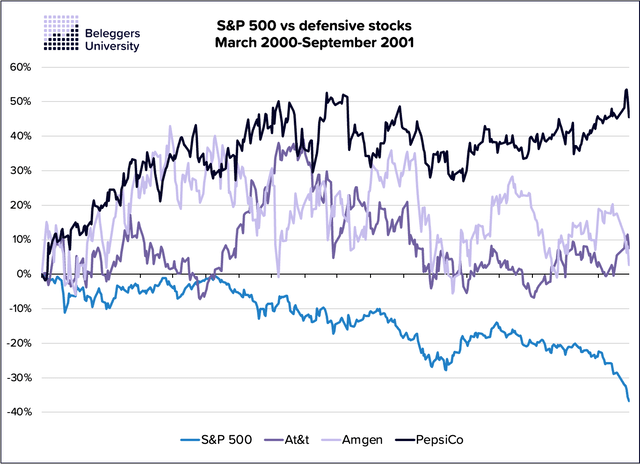
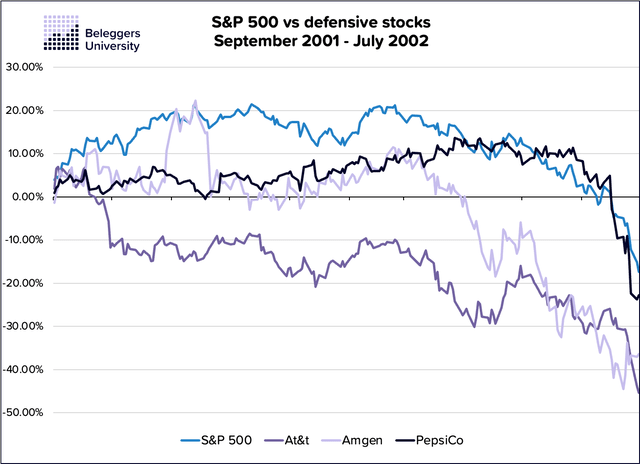
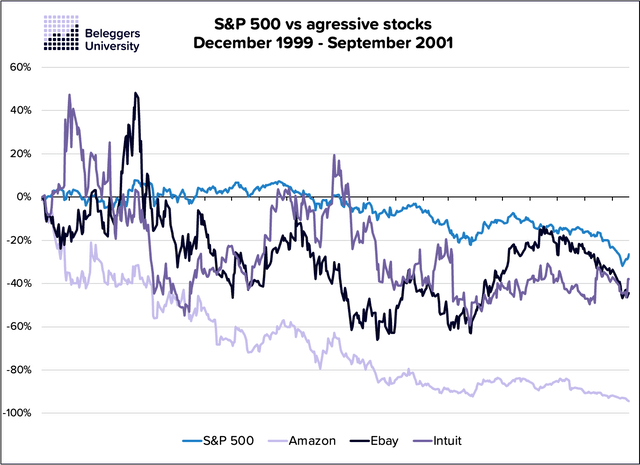
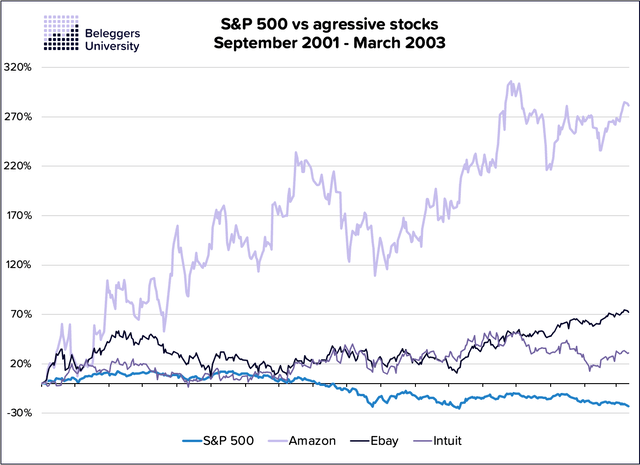
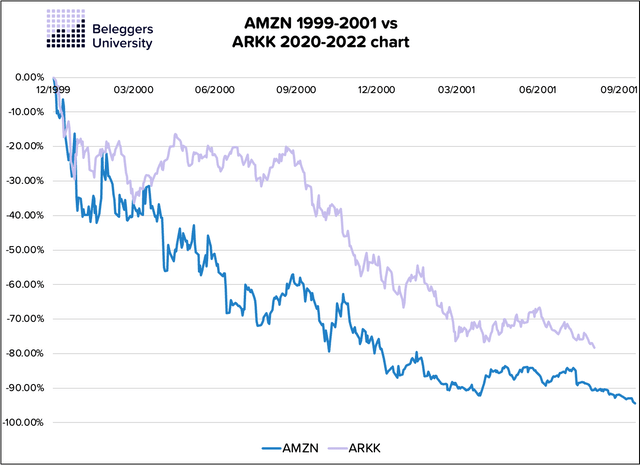
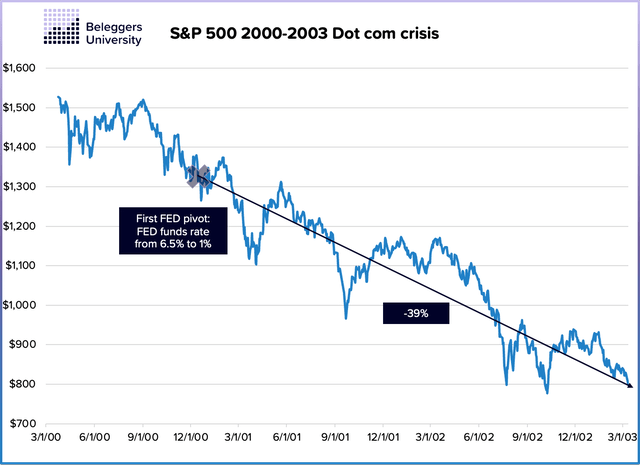
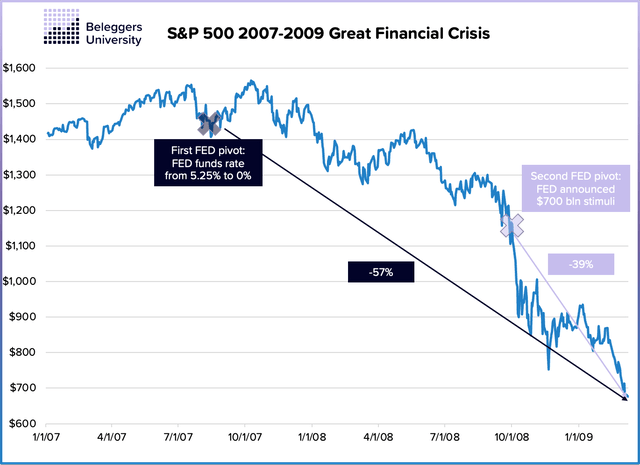
Be the first to comment